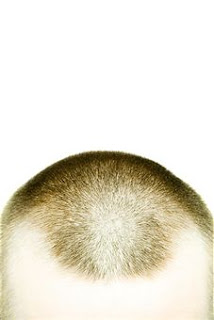Do hats cause hair loss? Will brushing your hair make it grow faster? Do blow-dryers make you bald? Let’s separate the hair loss myths from the facts.
We have all heard the old wives’ tales and stories about what causes hair loss and what you can do to stimulate hair growth. So much misinformation has been floating around for so long that it’s oftentimes difficult to distinguish the truth from the nonsense. Here we will address some of the most common myths about hair loss and thinning hair and uncover some of the facts about your hair.
Wearing hats causes hair loss
Myth: Unless your hat is extremely tight that it’s cutting off blood circulation to your follicles (and you’d be getting headaches in that case), wearing a hat isn’t going to cause you to go bald. So feel free to wear hats and caps for style reasons or to help disguise your hair loss.
Shaving your head will make hair grow back thicker
Myth: At first it will definitely appear thicker, but that is only because your hair is thicker at the base than it is at the ends. Once your hair grows back to its normal length, it won’t be any thicker than it was before you shaved it.
Shampooing your hair every day increases hair loss
Myth: Shampooing your hair too often (as well as the use of some other hair products) can cause damage to your hair shaft but not to your hair follicles. It’s probably in your best interest to shampoo every other day rather than every day for healthy hair.
Baldness comes from your mother’s side
Myth: Hair loss certainly can be caused by genetic factors, but don’t blame your mom! Those genes can come from both your mother and father. The more people who have hair loss issues (on either side of your family) the more likely that you will encounter baldness or hair loss.
Blow-drying your hair causes hair loss
Myth: Blow-dryers, flatirons, and curling irons can cause breakage and damage to your hair. So your hair may not be as healthy, shiny, or full, but blow-drying doesn’t directly cause hair loss, because it doesn’t influence your hair follicles.
Brushing your hair will make it grow faster
Myth: This old wives’ tale has been around for centuries. But perhaps surprisingly, brushing your hair 100 strokes a day won’t cause follicle stimulation to make it grow faster. In fact, brushing too often (particularly wet hair) can cause breakage and split ends.
Use a wide-tooth comb to detangle and style wet hair. On dry hair, use a flat, boar-bristle brush and try to keep the brushing to a minimum.
Lack of vitamins causes hair loss
Fact: Well, at least partially so.
Although healthy, well-nourished people can experience hair loss, malnourishment, unhealthy habits and certain vitamin deficiencies can exacerbate hair loss. Biotin and other B vitamins as well as vitamin E, vitamin C, and calcium are beneficial to your hair.
Try to eat a healthy diet of low-calorie, vitamin-rich foods consisting of whole grains, fruits and vegetables, lean meats, and “good” fats for your overall health.







